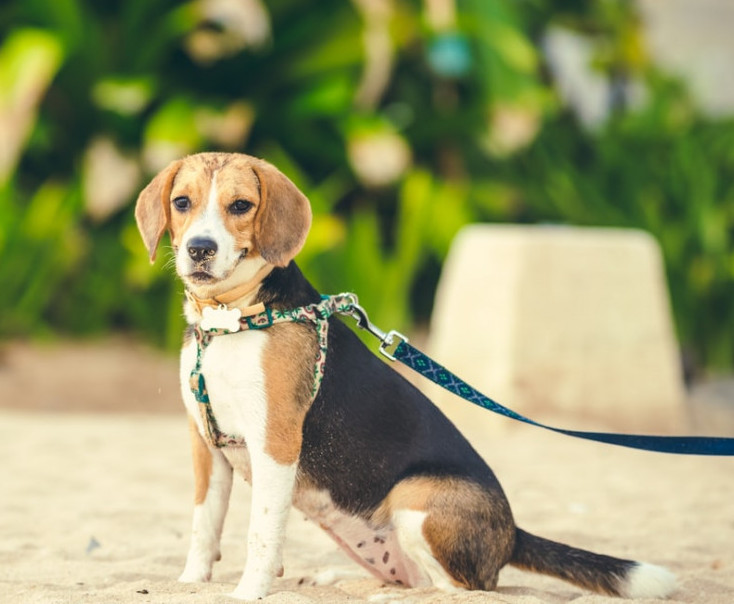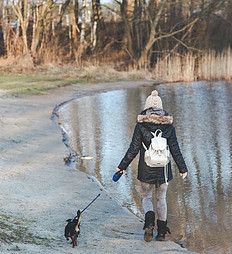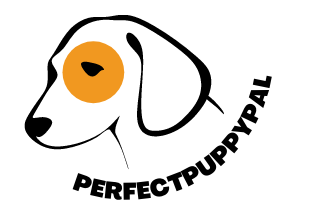How to Walk a Puppy on a Leash
So, the time has come for the newest addition to your family to venture outside for the first time! It can be an exciting but also an anxious time for your new pup when experiencing the big wide world initially.
There are some puppies that take to walking on a leash like a fish to water, but for others, the whole experience can be too overwhelming and quickly turn into a nightmare for your pup and also for you the owner. 
Here are the basics you will need to know about how to walk a puppy on a leash.
What’s needed before you begin
Before you even think about setting foot (or paws) outside, there are a few things that you will need first.
- Harness or collar – Firstly, you will need to decide if you want to purchase a harness or a collar for your new pal. Personally, I prefer to use a harness on my girl. Puppies have a tendency to pull and jump around a lot when they are first introduced to the great outdoors and I found that using a harness is more secure as the pressure is spread out and not only focused on the throat area as a collar is. It’s very important when choosing to buy either a harness or a collar that it fits your pup appropriately. It should neither be too tight or too loose providing security as well as a little give.
- Leash – When buying a leash make sure that it can be securely attached to either your dog collar or harness. You can purchase either a fixed-length leash or one that is extendable. For me, this will depend on where you are planning to walk with your pup. I would not recommend purchasing an extendable leash if you are mainly going to be walking on the street as cars, bikes and trucks could be a huge danger. If you intend to only walk in parks or wide-open spaces then this option should be fine, but as I walk my girl predominantly on the street I prefer to use a fixed-length leash for added security
- Lots of tasty snacks – A pocket full of tasty snacks or dog treats is a must when first taking your dog for a walk outside. Use these snacks to reward good behaviour when out and about such as respecting other dogs or doing their business where they should be doing it.
- Poop bags – Who hates walking down the street having to avoid piles of dog poo which are left by irresponsible owners too lazy to pick up what their pet has left behind. Well, I am certainly one of these people, and will never leave home with my girl without a few poop bags in my pocket, I just believe that cleaning up after our pooches is what a responsible pet owner should do.
- A lot of patience – Lastly, before starting to walk your dog, you will need to take a lot of patience with you! As mentioned before, if you are lucky enough to have a pup that instantly walks well, then you really are one of the lucky ones! Remember the world is new for your four-legged friend and they may not want to do what you would like them to, but have patience, take your time and you will surely get there in the end.

Techniques to start with
Before you take the plunge and take your pup outside for the first time, it is important to get them used to wearing their collar or harness first. When putting their collar or harness on for the first time do so slowly and try to make it a type of game where treats are involved for every step of the process and hopefully by the end they won’t even notice that they are wearing one.
Try leaving the collar on your pup for some time in the home while they are playing, then gradually increase the time they use it until they feel comfortable.
The next step is to attach the leash to the collar, this will be a different sensation for Fido, so, to begin with, walk around your home for a bit and reward with lots of treats of course for good behaviour!
Get outside!
Once you think your pal is comfortable using the harness/collar with the leash, it’s time to get them outside. If you have a garden then definitely start here first, keep them on the leash and let them get used to the new surroundings.
If you are without a garden then its time to hit the streets. Start by just taking them out for short five or ten minute walks to begin with. A short stroll to the end of the block is perfectly sufficient. It’s important to let them go at their own pace, let them stop and smell as much as they want to and reward them with treats for every little milestone reached.
Venturing further
Once your canine companion has mastered the art of meandering their way to the end of the street and back without issue, it’s time to venture further into the unknown and discover what else the big wide world has to offer.

Parks or wooded areas can be great fun to explore with your pooch. But to begin with keep a close eye on them because all of the new exciting smells, sights and sounds encountered along the way are sure to intrigue.
If you live in the city and will be predominantly walking your best friend on the streets, then there are additional hazards to look out for. Take extra care with cars and motorbikes as fast-moving objects such as these can easily startle your dog and cause them to lunge towards it. From personal experience, the same can be said for skateboards and kick scooters, so if you see any of these coming your way I find it best to stop, keep your pup on a short lead and wait for the danger to pass! If your dog doesn’t react and behaves well then always reward with a treat.
The long term benefits
So what are the benefits of training your pup to walk on a leash from a young age? Well, you will be glad to hear that there are many of them!
The physical benefits are an obvious one as dogs of all ages need exercise in order to stay physically fit and healthy. Puppies are especially active and without at least 2 or 3 good walks a day they will want to exhaust that energy in other ways such as destroying your home.
The social benefits of training your little friend on a leash are also very important for their development. Dogs are naturally sociable animals and teaching them to interact with other dogs or humans away from the comfort of your home could prove priceless as they grow older. Socializing from a young age will teach them the correct behaviour when out and about or when welcoming visitors to your home. A social dog is better than an anti-social one any day!
Mental stimulation is another important aspect of the growth of your pup. As your dog roams the neighbourhood with their nose to the ground they are collecting information through investigating the smells, sights and sounds of their ever-changing realm.
We need to remember that for a puppy (and as your dog ages for that matter), you as the owner are their whole world. So, regular walks together help to increase the companionship and bond between you and your pup so you can enjoy a long and happy relationship together.
If you have any or stories to share about your experiences when training your puppy to walk then please feel free to leave a comment below.
